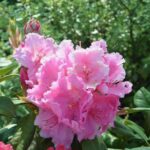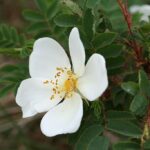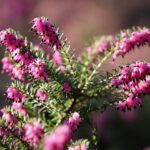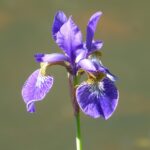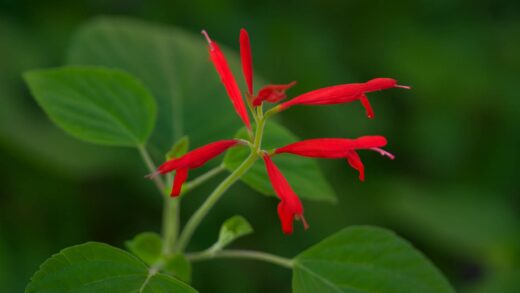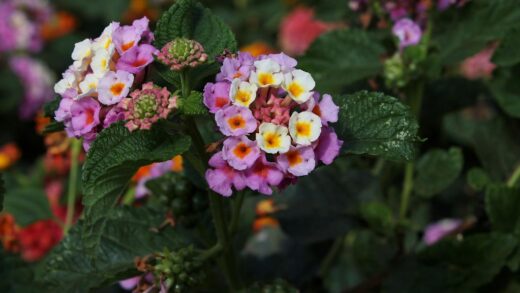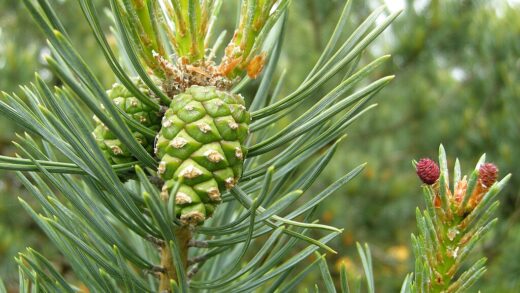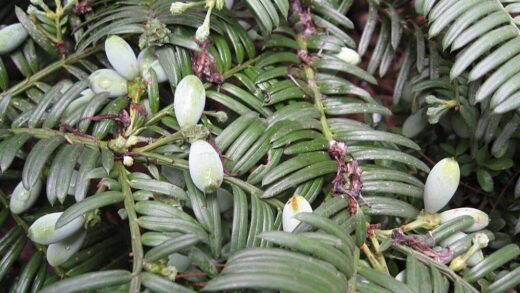Understanding the plumeria, often celebrated for its intoxicatingly fragrant and visually stunning blossoms, is the first step toward successful cultivation. This tropical native is not just a plant but an experience, offering a touch of the exotic to any garden or patio setting. While its beauty might seem demanding, its care requirements are surprisingly straightforward once its fundamental needs are met. By providing the right balance of sunlight, water, and nutrients, you can ensure your plumeria thrives, rewarding you with a profusion of flowers throughout the growing season and maintaining its structural health for years to come.
Foundational knowledge for plumeria enthusiasts
A deep appreciation for the plumeria begins with understanding its tropical origins, which dictates its preferences for warmth, humidity, and abundant light. These plants are essentially small trees or shrubs that have adapted to climates with distinct wet and dry seasons, a pattern that gardeners should aim to replicate in their care routines. Their growth cycle is intrinsically linked to seasonal changes, entering a period of vigorous growth in the spring and summer before slowing down and entering dormancy in the autumn and winter. Recognizing and respecting this natural rhythm is paramount for long-term success and vitality.
The anatomy of the plumeria is also key to its proper care, particularly its thick, succulent stems that store water, making it relatively drought-tolerant. This water-storing capability means the plant is highly susceptible to root rot if overwatered, a common mistake made by novice growers. The leaves are large and leathery, designed to maximize photosynthesis, while the magnificent flowers, known as inflorescences, emerge from the tips of the branches. Understanding that blooms only form on mature wood helps manage expectations and pruning strategies effectively.
Furthermore, it’s important to recognize that there are many different species and cultivars of plumeria, each with subtle variations in growth habit, flower color, and fragrance. While the general care principles apply to most, some varieties may exhibit slightly different tolerances to cold or preferences for soil acidity. Researching your specific cultivar can provide valuable insights, allowing for a more tailored and effective care regimen that brings out the best in your particular plant, from its growth rate to the intensity of its floral display.
Finally, embracing a mindset of observation is perhaps the most crucial tool a plumeria grower can possess. Your plant will provide clear signals about its health and needs; yellowing leaves can indicate overwatering, while a lack of flowers might point to insufficient sunlight. Learning to interpret these signs allows for timely adjustments to your care practices, preventing minor issues from escalating into significant problems. A proactive and attentive approach will foster a strong, resilient plant capable of weathering environmental stresses and producing breathtaking blooms year after year.
More articles on this topic
Creating the ideal growing environment
The single most critical environmental factor for a thriving plumeria is an abundance of direct sunlight. These plants are true sun-worshippers, requiring at least six to eight hours of direct sun each day to gather the energy needed for vigorous growth and, most importantly, prolific flowering. A location that receives ample morning and midday sun is ideal, as this intense light fuels the photosynthetic processes that lead to the development of strong stems and vibrant inflorescences. Without adequate light, a plumeria may produce lush foliage but will likely fail to bloom.
Temperature and humidity also play a significant role in creating a suitable habitat for plumeria. As tropical plants, they flourish in warm conditions, with optimal daytime temperatures ranging between 24 to 32 degrees Celsius. They are highly sensitive to frost, and temperatures dropping below 5 degrees Celsius can cause significant damage or even be fatal. Providing a consistently warm environment during the growing season is essential, as is protecting the plant from cold drafts and sudden temperature drops, which can stress the plant and inhibit its growth.
Proper air circulation is another often-overlooked component of a healthy plumeria environment. Good airflow around the plant helps to prevent the development of fungal diseases, such as rust and powdery mildew, which thrive in stagnant, humid conditions. When grown outdoors, natural breezes usually suffice, but for indoor or sheltered plants, ensuring there is enough space between plants for air to move freely is crucial. This simple measure can significantly reduce the risk of common pathogens taking hold and compromising the plant’s health.
Choosing the right container is also part of crafting the perfect environment, especially for gardeners in non-tropical climates where the plant must be moved indoors for winter. A pot with multiple, large drainage holes is non-negotiable to prevent waterlogging and the subsequent risk of root rot. The material of the pot can also influence soil temperature and moisture retention; terra cotta pots are porous and allow the soil to dry out faster, which can be beneficial in wetter climates, while plastic pots retain moisture longer. The key is to select a container that supports excellent drainage and provides stability for the top-heavy plant.
More articles on this topic
Soil composition and potting essentials
The foundation of a healthy plumeria is a soil mix that provides excellent drainage above all else. In their native habitat, these plants often grow in sandy, porous, or even rocky soils, and replicating this is crucial to prevent their greatest enemy: root rot. A high-quality cactus or succulent potting mix is an excellent starting point, as it is specifically formulated to be fast-draining. Standard potting soils are generally too heavy and retain too much moisture, which can suffocate the roots and lead to fatal decay over time.
To further enhance the drainage properties of a commercial mix, it is highly recommended to amend it with additional materials. Incorporating inorganic components like perlite, pumice, or coarse sand can significantly improve the soil’s structure, creating more air pockets and allowing water to pass through freely. A common and effective recipe is to combine one part cactus mix with one part perlite or pumice. This creates a light, airy medium that provides the perfect balance of moisture retention and rapid drainage that plumeria roots require to thrive.
The pH of the soil is another important consideration for optimal nutrient uptake. Plumerias prefer a slightly acidic soil, with a pH ranging from 6.0 to 6.7. Most commercial potting mixes fall within this range, but it can be beneficial to test your soil periodically, especially if you are using organic amendments that can alter the pH over time. If the soil becomes too alkaline, the plant may struggle to absorb essential micronutrients, leading to deficiencies and poor growth, even if you are fertilizing regularly.
When it comes time to repot your plumeria, which is typically necessary every two to three years or when it becomes root-bound, the process should be handled with care. Select a new pot that is only slightly larger than the previous one, as moving to a drastically larger container can lead to the soil staying wet for too long. Gently remove the plant, inspect the root ball for any signs of rot (which should be trimmed away), and place it in the new pot at the same depth it was previously growing. Fill in with your well-draining soil mix, firming it gently around the roots, and water lightly to settle the soil.
The seasonal cycle of care
Spring marks the reawakening of the plumeria from its winter dormancy, signaling a crucial transition in its care regimen. As daylight hours lengthen and temperatures consistently rise, the plant will begin to show signs of new growth, often with small, claw-like leaves emerging from the branch tips. This is the time to gradually reintroduce water, starting with a light watering and increasing the frequency as more leaves develop. It is also the perfect moment to move the plant back to a location with full sun and to begin a regular fertilization schedule to support the forthcoming period of vigorous growth.
Throughout the summer, the plumeria is in its most active growth phase, demanding consistent care to support its development and encourage abundant flowering. This is the period when watering needs will be at their highest; the soil should be watered thoroughly whenever the top few inches feel dry to the touch. Regular fertilization, typically every two to four weeks with a high-phosphorus formula, is essential to provide the necessary nutrients for producing spectacular blooms. Consistently monitoring the plant for pests and ensuring it receives maximum sunlight will result in a healthy, vibrant display.
As autumn approaches, the plumeria naturally begins to prepare for dormancy. The shortening daylight hours and cooler temperatures trigger a slowdown in its metabolic processes. You will notice that the leaves may start to turn yellow and drop off, which is a normal part of its annual cycle. In response, you should significantly reduce the frequency of watering, allowing the soil to dry out more completely between drinks. Fertilization should be stopped entirely by early autumn to discourage new, tender growth that would be vulnerable to cold damage.
Winter care is primarily about providing a safe, dormant resting period for the plumeria, especially in climates where temperatures fall below freezing. The main goal is to keep the plant dry and protected from the cold. For potted plants, this means moving them indoors to a garage, basement, or unheated room where temperatures remain consistently above freezing. During dormancy, the plant requires little to no water—perhaps only a very light watering once a month to prevent the roots from completely desiccating. This resting phase is vital for the plant to conserve energy for the next growing season.
Promoting and maintaining blooms
The key to unlocking a plumeria’s spectacular flowering potential lies in providing a fertilizer that is high in phosphorus. Phosphorus is the essential macronutrient that directly promotes the development of flowers, buds, and a strong root system. When selecting a fertilizer, look for one with a higher middle number in its N-P-K ratio, such as a 10-50-10 or similar “bloom booster” formulation. Applying this type of fertilizer regularly during the active growing season, from spring through summer, provides the plant with the specific fuel it needs to produce large, fragrant clusters of blossoms.
Consistent and adequate sunlight is just as crucial as the right fertilizer for encouraging blooms. Plumerias are photophilic, meaning they require a significant amount of light energy to initiate the flowering process. A plant that is not receiving at least six hours of direct, unfiltered sunlight per day is unlikely to bloom, regardless of how well it is fertilized. If your plumeria is producing healthy leaves but no flowers, the first thing to assess and correct is its light exposure, gradually moving it to a sunnier location if necessary.
Maturity also plays a significant role in a plumeria’s ability to flower. Young plants, especially those grown from seed or small cuttings, need time to develop a sufficient amount of mature wood and a robust root system before they have the energy reserves to produce blooms. It is not uncommon for a plumeria to take two, three, or even more years to produce its first inflorescence. Patience is essential; continue to provide optimal care, and as the plant matures, it will eventually reward you with its iconic flowers.
Proper watering techniques can also influence flowering. While plumerias are drought-tolerant, prolonged periods of water stress can cause the plant to conserve resources and abort a developing inflorescence. Conversely, overwatering can lead to root rot, which severely compromises the plant’s overall health and its ability to bloom. The goal is to maintain a consistent watering schedule that allows the soil to dry out slightly between thorough waterings, ensuring the roots are healthy and capable of supporting the energy-intensive process of flower production.
Long-term health and vitality
Pruning is an essential practice for maintaining the long-term health, shape, and productivity of a plumeria. Strategic pruning, typically performed in the late winter or early spring before new growth emerges, can encourage the plant to become bushier and produce more flowering tips. Removing overly long or “leggy” branches prompts the plant to send out two or three new branches from just below the cut, effectively multiplying the potential sites for future blooms. It is also important to remove any dead, damaged, or diseased branches at any time of year to prevent problems from spreading.
Repotting your plumeria every few years is vital for its continued vitality, as it replenishes the soil and provides more space for the expanding root system. Over time, the soil in a pot can become compacted and depleted of nutrients, hindering root growth and the plant’s ability to absorb water and fertilizer. When you notice growth slowing down or see roots emerging from the drainage holes, it is a clear sign that the plant needs a new home. This process invigorates the plant, providing it with fresh, nutrient-rich soil and stimulating a new flush of healthy growth.
Protecting the plumeria from extreme temperatures is fundamental to its survival and long-term well-being, especially in temperate climates. Consistently safeguarding the plant from frost and freezing conditions during the winter is non-negotiable. This period of dormancy is a natural and necessary part of its life cycle, but exposure to a hard freeze can kill the plant’s tissues. Similarly, during intense summer heatwaves, providing some light afternoon shade can prevent the leaves from scorching and reduce overall stress on the plant.
Finally, an integrated approach to pest and disease management is crucial for ensuring the plant’s enduring health. This involves regular inspection of the leaves and stems for early signs of common issues like spider mites, scale, or rust. Rather than waiting for a severe infestation, proactive measures such as maintaining good air circulation, keeping the foliage dry, and promptly treating minor problems with horticultural oils or insecticidal soaps can prevent them from becoming major threats. A healthy, well-cared-for plant is naturally more resilient and better equipped to fend off pests and diseases on its own.







